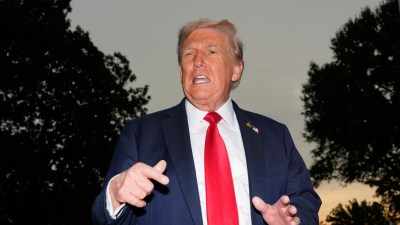Freedom Calling
On July 31, 1995, the first mobile phone call in India was made in Calcutta — an event that surprised the rest of the country and transformed the lives of many
 On July 31, 1995, the first mobile phone call in India was made in Calcutta
On July 31, 1995, the first mobile phone call in India was made in Calcutta
Sometime in mid-1995, a large flex poster of a woman smiling at the camera, holding what looked like a boxy cordless phone, came up on a verdant stretch of Kolkata’s Eastern Metropolitan Bypass. An unsuspecting city drove past it, too caught up with the everyday realities of power cuts and water logging to notice the announcement of a technology that would revolutionise its life. But Rukshana Kapadia, 43, was intrigued. “I’d read about mobile telephones in newspapers. I was a bit of a gizmo freak and I was helping my father with his business. So I thought it would be a nice time to get myself this new toy,” says Kapadia, head, administration and commercial at Switz Foods Private Ltd.
Kalyan Sarangi bought one too. The then project manager of Usha Martin Telecom, one of the first cellular service providers in the country, saw it as an exciting new experiment. “Initially, we visited doctors and corporate houses to try and sell them mobile phones. But most of them were really suspicious of this new technology. They felt pager services were enough for them,” she says. But by the next year, the company celebrated its first 5,000 subscribers in the Kolkata circle.
On July 31, 1995, the first cellular call in India was made over Modi Telstra’s MobileNet GSM network in Calcutta. Today, with a subscriber base of more than 929 million, the mobile telecommunications system in India is the second-largest in the world China and it was thrown open to private players in the 1990s.
Kolkata, which is still considered to be a somewhat traditional market when it came to embracing technology, ended up being an “incidental beneficiary” when it came to history of mobile technology in India. “The government had flouted tenders for metropolitan circles. But there were delay for various reasons, including last-minute haggling between the companies and India’s Department of Telecommunications (DoT) and problems with allocating frequencies. The providers started advertising only around April, and Kolkata, oddly enough got things in place before other circles,” says Sarangi.
Services in Mumbai and Delhi took off a month after the Kolkata launch. In 1995, there were about 27 cell sites in Bengal. Today, there are at least 4,000 cell sites for each circles for each provider. “A year after the launch, our boss came to us, wanting to know if we could pump up the subscription to about a lakh, but only if the cost of the handsets were brought down by Rs 10,000 and call rates dropped. Our answer was a resounding no,” says Sarangi.
Kapadia remembers walking into the plush Mobilenet office in Park street to buy her first handset, sometime in August 1995. “It was a navy blue Motorola Flare. It was packaged nicely and the salesperson demonstrated how to make and receive calls. The very thought makes me laugh now,” she says. But the gadget helped her image. “It was the 1990s and women entrepreneurs were still a rarity. I’d just started my own business and in a largely male-dominated industry, it wasn’t easy to be taken seriously. However, when I would walk into a meeting with my mobile phone in hand, I could see a distinct shift in their attitude. They felt that I meant business,” says Kapadia.
Rai Sen, a communications professional in Delhi, was a student at Jadavpur University when her father bought her a mobile phone in 1995. Her memories of the the Philips cellular phone are inextricably linked to partying in Kolkata’s popular hotspots. 1990s was also the time when the youth of the city were waking up to the concept of a night life. “There was a popular hangout zone called Anticlock night club in Hotel Hindusthan International, which was comparatively cheaper than the Park street hangouts. That kidney-shaped bean gadget extended my curfew hours,” says Sen.
“I didn’t realise that life could be made easier with a mobile phone when I first got one in 1996. For me, it was a headache, another thing to attend to. I was actually scared of it,” says SK Chaudhuri, who used to work for CESC in the mid-1990s. The ridiculously high tariffs didn’t help either. In 1995, an outgoing call was for about Rs 16 per minute and an incoming call was marginally lesser. “When my father would hand me my mobile phone every evening before I went out, he would sternly warn me about the high tariff. I was to call only if something urgent had come up,” says Sen.
Chaudhuri remembers how people would stop and stare if he attended phone calls publicly. “Sometime in early 1996, I was walking down Dalhousie and I got a call from the office. I generally avoided taking calls in public because of the attention it attracted. As soon as I took my Motorola phone out, people started staring. I went to a corner and started speaking, when a lady actually came up to me and asked if the phone was a toy. When I politely told her it was not, she insisted that I give the phone to her so that she could verify it for herself,” says Chaudhuri with a laugh.






